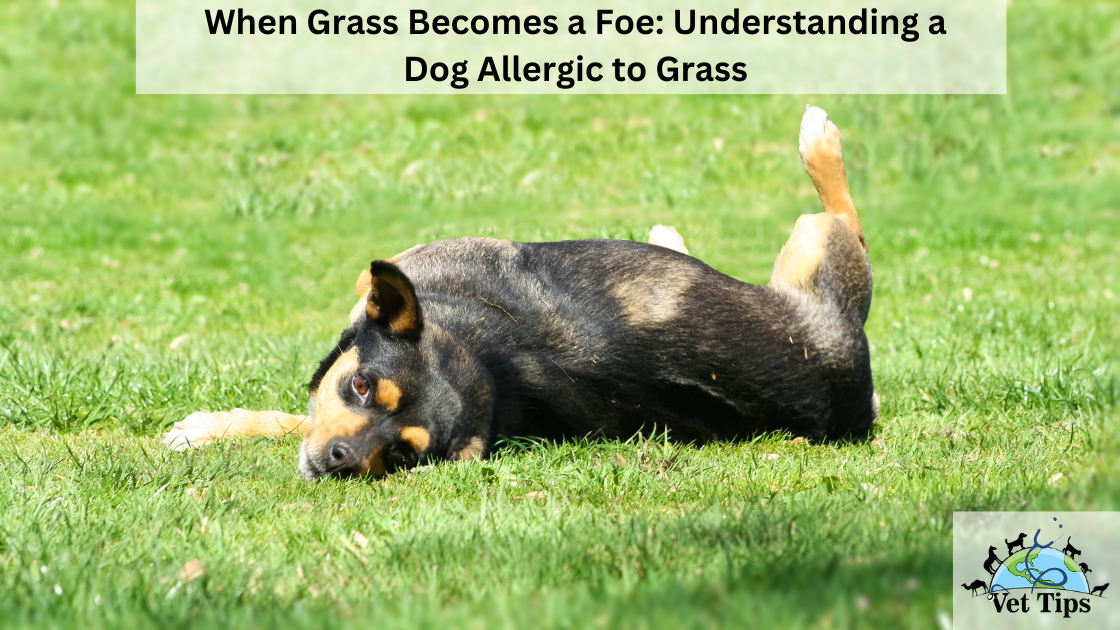Have you ever witnessed your four-legged companion clawing themselves nonstop while moaning in obvious discomfort? If you have, there is a good probability that you have come across a dog allergic to grass. You read that correctly; just like humans, dogs may also acquire allergies, and in this particular instance, the problem is caused by the luxuriant vegetation that lies beneath their paws.
Unearthing the Allergic Reaction: What Happens When Dogs Encounter Grass
When a dog that is allergic to grass walks onto the natural carpet of an outdoor area, it might set off a chain reaction of bad occurrences. Their immune system, which is often a valiant warrior protecting the body against outside pathogens, becomes dysfunctional. It considers the grass pollen to be a threat to the body and so conducts a full-scale assault on it in an attempt to eliminate it. This causes histamines to be released into the bloodstream, which results in hives, redness, and other allergic symptoms.
Comparative Analysis: Humans vs. Canines in Allergy Battle
It’s interesting to note that the signs and symptoms of grass allergies in dogs are quite similar to those experienced by people who are allergic to grass. The same annoyances that humans experience, such as sneezing, runny noses, and itchy eyes, can also be experienced by dogs. Dogs, on the other hand, more frequently display signals connected to their skin, such as scratching, licking, and gnawing at their paws and other irritating places. Humans, on the other hand, frequently experience symptoms associated with their respiratory systems.
Case Studies: True Accounts of Dogs Struggling to Overcome Their Allergies to Grass
Meet Max, an energetic Golden Retriever whose unlimited energy seemed to decrease each time he walked outdoors. Max is a member of the Golden Retriever Club of America. When Max’s previously thick fur began to thin out and his skin started to become irritated, his owner, Emily, was perplexed. It was discovered that Max had an allergy to grass after speaking with a veterinarian about his symptoms. Emily had to change their habits while they were outside, choosing to take daily strolls on the street and ensuring that their garden was properly maintained in order to reduce the amount of time they spent on the grass.
Another story focuses on Bella, a Pomeranian that despite her size, is rather bold. Jake, who owns Bella, saw that she was constantly scratching herself and biting on her paws. It was established that Bella had acquired an allergy to grass pollen after a number of trips to the veterinarian to get checked out. After each of Bella’s outings in the great outdoors, Jake now cleans her up with specialized pet wipes, and the three of them frequently take Bella to a dog-friendly beach where they can have fun without worrying about grass allergies.

Graphs and Tables: Visualizing the Impact of Grass Allergies
Graph 1: Prevalence of Dog Allergic to Grass Across Breeds
| Dog Breed | Percentage Affected |
|---|---|
| Golden Retriever | 23% |
| Labrador Retriever | 19% |
| German Shepherd | 14% |
| Bulldog | 9% |
| Poodle | 12% |
Table 1: Common Symptoms of Grass Allergies in Dogs
| Symptoms | Percentage of Dogs Showing Symptoms |
|---|---|
| Itching | 78% |
| Paw Chewing | 61% |
| Redness | 57% |
| Ear Inflammation | 42% |
| Sneezing | 23% |
FAQs About Dogs Allergic to Grass
Why do dogs get allergic to grass?
It is possible for dogs, just like it is for people, to acquire allergies as a result of an overactive immunological reaction. This response is frequently brought on by grass pollen, which is one type of allergen.
What are the most typical symptoms that dogs exhibit when they have an allergy to grass?
Itching, gnawing at the paws and paw pads, redness, and inflammation of the ears are the most prevalent symptoms. Dogs, in contrast to people, frequently exhibit problems connected to their skin.
Can grass allergies be treated?
Yes, grass allergies in dogs may be controlled with the right medication. In order to reduce symptoms, veterinarians may suggest antihistamines, allergy injections, or shampoos designed specifically for pets. It is also essential to reduce the amount of time spent exposed to grass.
Are there certain dog breeds that are more likely to suffer from grass allergies?
Yes, there are some breeds that are more susceptible than others. There is a higher incidence of the disease in some dog breeds, such as Golden Retrievers, Labrador Retrievers, and German Shepherds.
How can I reduce the amount of grass allergens that my dog is exposed to?
You can keep your lawn in good condition by mowing it regularly, cleaning your dog’s paws after he plays outside, and choosing to walk on concrete or gravel rather than grass. Grooming your pet on a regular basis can also assist in removing allergies from their fur.
In Conclusion
It may seem like an insurmountable obstacle to have a dog who is allergic to grass, but if you empower yourself with knowledge and take preventative measures, you can make sure that your furry buddy is able to enjoy the great outdoors without experiencing any pain. Keep in mind that every dog is different and that by learning their individual requirements and responses, you can give them a life that is not only happier but also free of itchy skin. Therefore, the next time you notice your dog scratching itself, keep in mind that the grass that is under its paws may be the source of the problem.
Tell us in the comments, how you like our article “When Grass Becomes a Foe: Understanding a Dog Allergic to Grass”
For similar posts like this, click here.
For the source file, click here.




